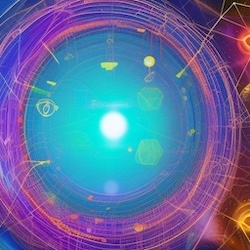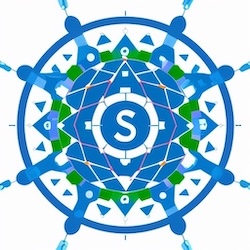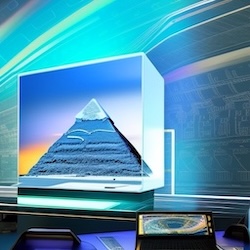
1. The mathematics of quantum computers. (174 words)
Quantum computers employ quantum mechanics and utilize qubits, which can exist in superposition and entanglement states. These systems leverage quantum algorithms to perform complex calculations by manipulating and measuring qubits, harnessing the principles of quantum superposition, and interference for computational advantage.
Let’s start our quantum computation in state |00>, and then apply a quantum gate. Now the qubits are in a superposition. There is a one-half probability, or 50% chance, of being |01>, and a one-half probability of being |10>. Ignore the square roots, I’ll explain them in a minute. The particular superposition it’s in is a result of the quantum gate we chose to apply.
Here is one more quantum gate changing the state of our computation. At the end of a quantum computation we observe -or measure- the system. But we can’t see these delicate superpositions. Remember, a superposition is like a limbo between basic states. When you observe the computation, and look at it from the perspective of these basic states, it must pick one, collapsing the wave function and revealing a single basic state. In this case it collapsed to state |01>.
If you run the same computation repeatedly the final result will be |01> half the time, It’ll be |10> one-sixth of the time, and |11> one-third of the time.

2. Teach statistics before calculus. (183 words)
Should statistics be taught prior to calculus? This question arises from the potential benefits of providing students with a solid foundation in data analysis and probability, which can enhance their understanding and application of calculus concepts in real-world scenarios, promoting a more practical and well-rounded mathematical education.
The mathematics curriculum that we have is based on a foundation of arithmetic and algebra, and everything we learn after that is building up towards one subject, and at the top of that pyramid it’s calculus. And I’m here to say that I think that that is the wrong summit of the pyramid. At the correct summit, that all of our students every high school graduate should know, should be statistics. Probability and statistics.
I mean... don’t get me wrong, calculus is an important subject. It’s one of the great products of the human mind, the laws of nature are written in the language of calculus, and every student who studies math, science, engineering, economics, they should definitely learn calculus by the end of their freshman year of college, but I’m here to say, as a professor of mathematics, that very few people actually use calculus in a conscious meaningful way in their day-to-day lives. On the other hand, statistics, that’s a subject that you could and should use on a daily basis, right? It’s risk, it’s reward, it’s randomness, it’s understanding data.

3. Ancient Egyptian math is modern computing? (188 words)
Is it possible to establish a link between the mathematics designed by the Egyptians thousands of years ago and the computer technology we use today?
All of the Egyptian sciences and arts seem to have been in place at the very beginning of Egypt, even if they weren’t fully realized for a couple of centuries.
One example is the mathematics. Egyptian mathematics is sometimes called cumbersome and primitive by modern scholars; however, upon examination, we find that rather than primitive fumbling the Egyptians were using a method of calculation, precisely like our modern computers.
Michael Schneider, mathematician, geometer, author of the beginners guide to constructing the universe provides an insight into these Egyptian methods.
The mathematics used in modern computers is identical with the mathematics that was used in ancient Egypt, and I’ll show you how that works. Today when we write a number we work in powers of 10 and place value. We have the ones, the tens, the hundreds columns and, if we wanted to say four hundred and seventy-two, we are really saying four one hundreds, seven tens plus two ones.
But the way this occurs in modern computers is not place 10 value, but place two value, so the powers are ones, twos, fours, eights, sixteens and so forth.